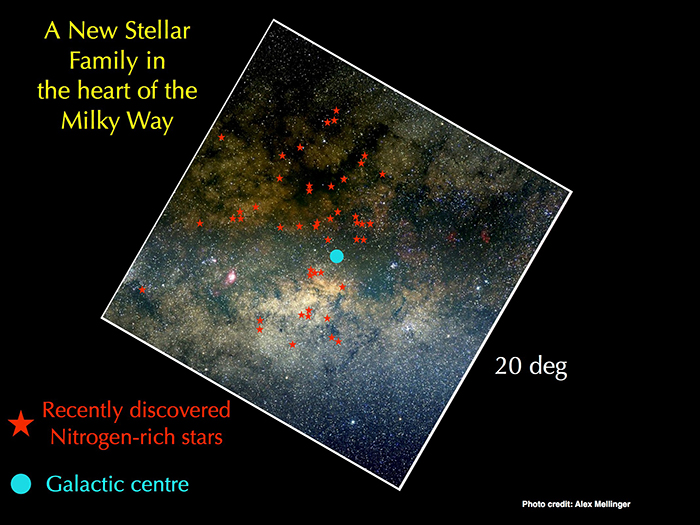25.11.2016
New family of stars discovered in Milky Way shed new light on Galaxy’s formation

An astronomer from LJMU’s Astrophysics Research Institute has discovered a new family of stars in the core of the Milky Way Galaxy which provides new insights into the early stages of the Galaxy’s formation.
The discovery has shed new light on the origins of globular clusters – which are concentrations of typically a million stars, formed at the beginning of the Milky Way’s history.
LJMU is a member of Sloan Digital Sky Survey - an international collaboration of scientists at numerous institutions. One of the projects of this collaboration is APOGEE (the Apache Point Observatory Galactic Evolution Experiment) which collects infrared data for hundreds of thousands of stars in the Milky Way.
It was through observing stars in the infrared towards the Galactic centre that led to the discovery of a new population of stars, the likes of which had only been seen before inside globular clusters.
This intriguing new family of stars could have possibly belonged to globular clusters that were destroyed during the violent initial formation of the Galactic centre, in which case there would have been about 10 times more globular clusters in the Milky Way in early life than today. This means that a substantial fraction of the old stars inhabiting the inner parts of the Galaxy today may have been initially formed in globular clusters that were later destroyed.
Ricardo Schiavon, lead researcher on the project said:
“This is a very exciting finding that helps us address fascinating questions such as what is the nature of the stars in the inner regions of the Milky Way, how globular clusters formed and what role they played in the formation of the early Milky Way—and by extension the formation of other galaxies.”
“The center of the Milky Way is poorly understood, because it is blocked from view by intervening dust. Observing in the infrared, which is less absorbed by dust than visible light, APOGEE can see the center of the Galaxy better than other teams
“From our observations we could determine the chemical compositions of thousands of stars, among which we spotted a considerable number of stars that differed from the bulk of the stars in the inner regions of the Galaxy, due to their very high abundance of nitrogen. While not certain, we suspect that these stars resulted from globular cluster destruction. They could also be the byproducts of the first episodes of star formation taking place at the beginning of the Galaxy’s history. We are conducting further observations to test these hypotheses.”
Read the full paper here in the Monthly Notices of the Royal Astronomical Society (MNRAS).
This story also featured in The Conversation and the Mail Online.
Picture description: The image above shows a visible picture of the inner 20 degrees of the Milky Way as seen from Earth (for comparison, the Moon is roughly 1/2 a degree on the sky). This part of the sky is extremely crowded due to the high density of the central regions of the Galaxy as well as the presence of many stars between Earth and the Galactic centre. Dark patches are due to absorption of visible light by dense dust clouds. Overall, the absorption by dust is largest in the centre than anywhere else in the Galaxy. The cyan circle shows the location of the Galactic centre, and the red stars indicate the positions of the stars newly discovered by APOGEE. Many of them coincide with regions of high dust absorption, which explains why APOGEE, observing in the infrared, was the first to detect the existence of this new stellar family.
Quelle: Liverpool John Moores University

